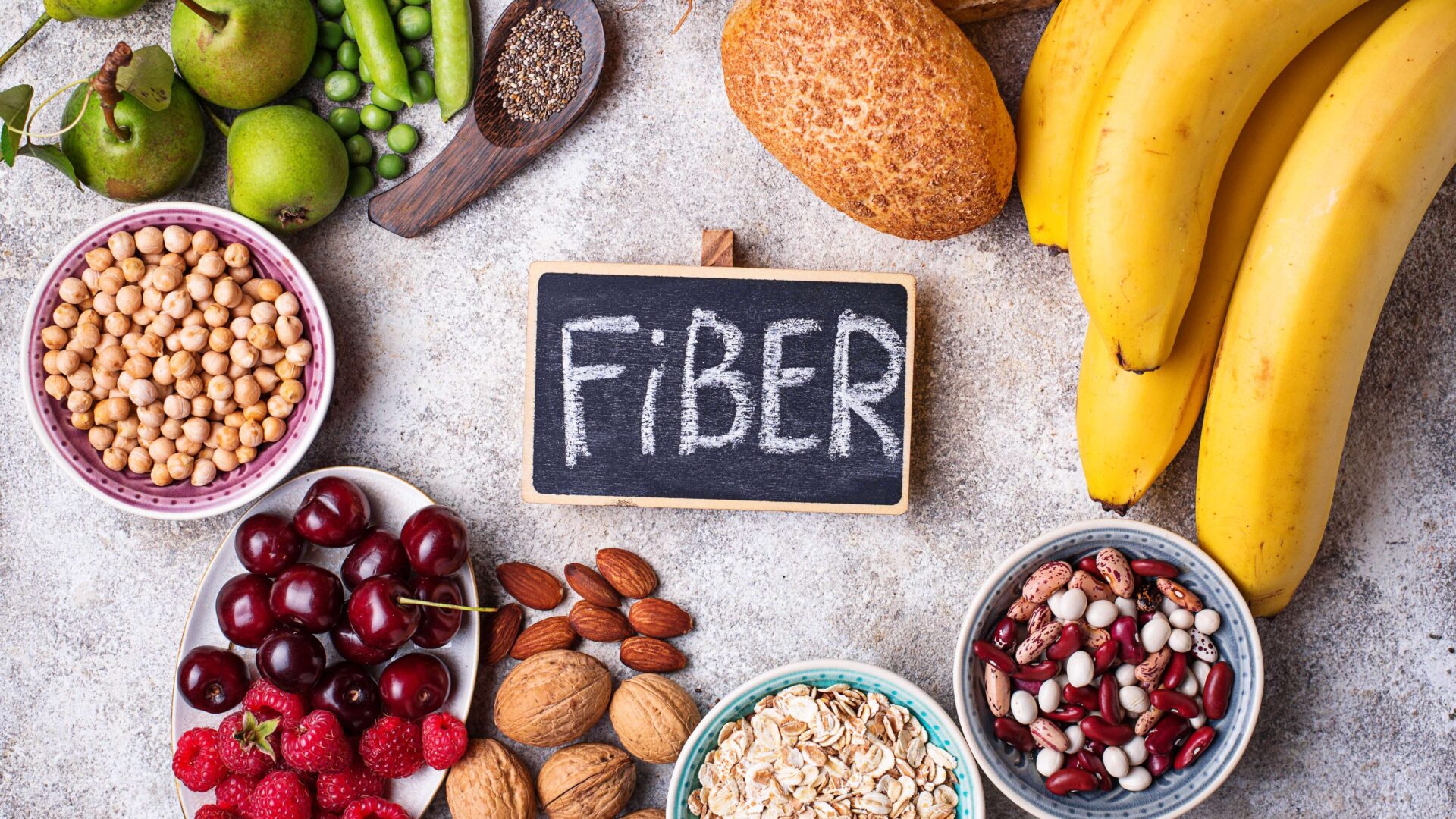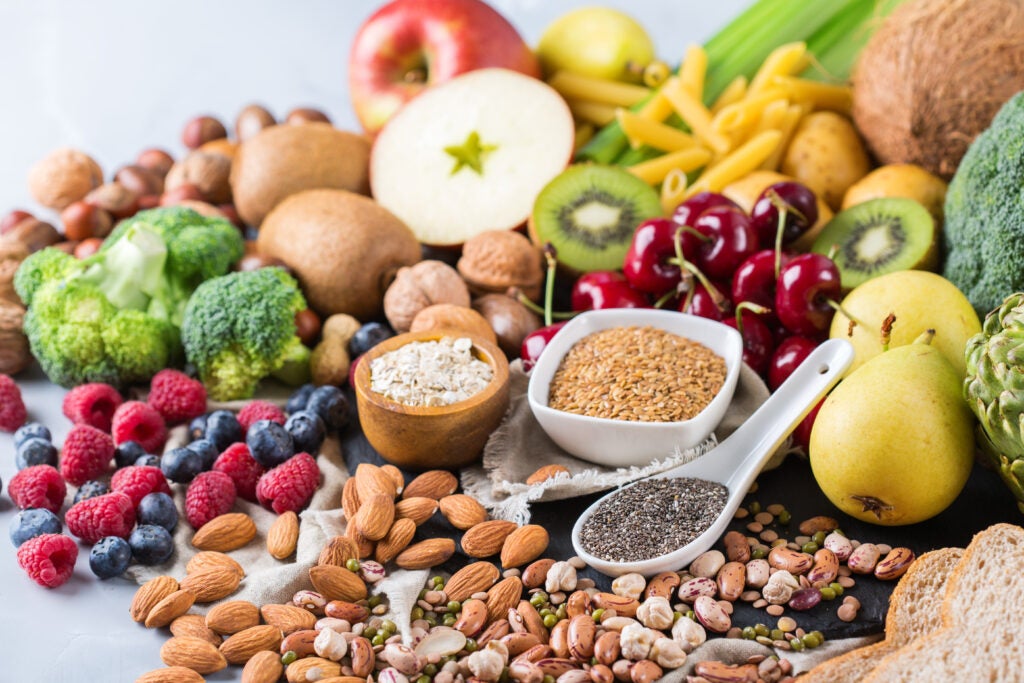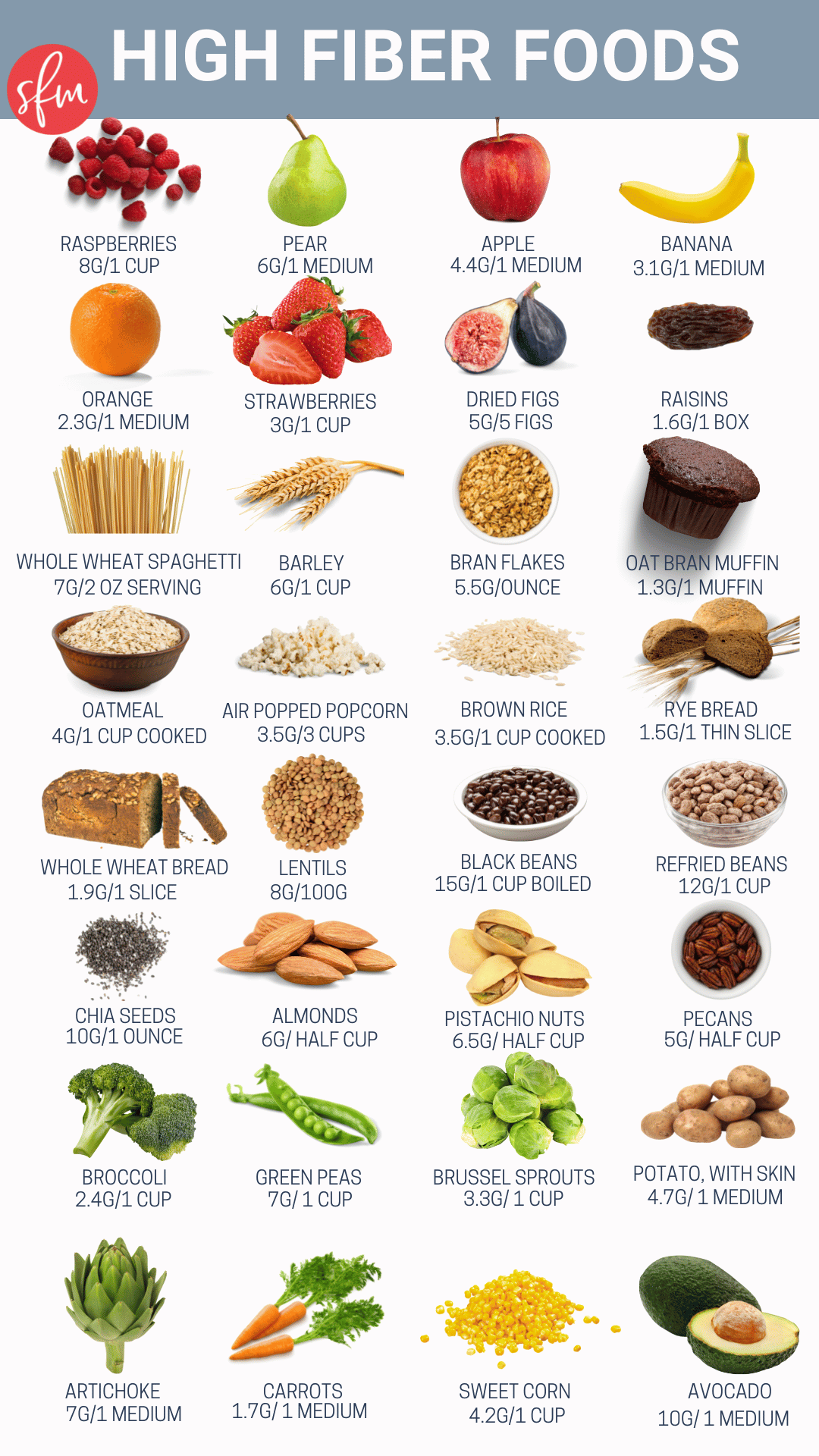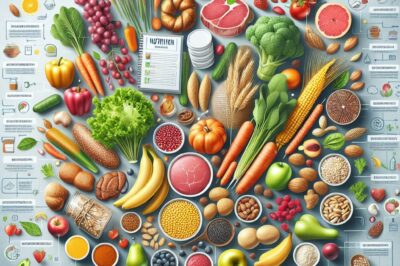What You Need to Know
- Improved digestion, lower cholesterol, and weight management can all be achieved through a high fiber diet.
- Soluble fiber, which dissolves in water, helps regulate blood sugar levels, while insoluble fiber is good for digestion.
- Adults should strive to consume 25-30 grams of fiber each day from a variety of sources.
- Fruits, vegetables, whole grains, and legumes are all high in fiber.
- Slowly increasing your fiber intake can help avoid digestive discomfort.
The Importance of Fiber for Your Health
Many people don’t eat enough fiber, even though it’s a key part of a healthy diet. Fiber is the indigestible part of plant-based foods. While that might not seem like a big deal, it’s actually essential for good health. There are two main types of fiber: soluble and insoluble. Each type has a different role in the body and provides different health benefits.
Instant Advantages of a Diet Rich in Fiber
As soon as you begin to ingest more fiber, the benefits can be nearly instant. The first transformation you’ll observe is better digestion. Fiber aids in increasing stool bulk and maintaining a smoothly operating digestive system. In addition, a diet high in fiber can also assist in making you feel satiated for a longer period of time, which may deter overeating and assist in managing your weight.
Additionally, fiber has the ability to regulate blood sugar levels. This is especially helpful for those who have diabetes, as it can aid in maintaining steady blood sugar levels after meals. By adding more fiber to your diet, you might also see a boost in your energy levels and mood.

“The Facts About Fiber | Whitsons …” from whitsons.com and used with no modifications.
Getting to Know Soluble and Insoluble Fiber
Knowing the difference between soluble and insoluble fiber is key to getting the most out of a high fiber diet. Soluble fiber turns into a gel-like substance when mixed with water. It can help decrease cholesterol and blood sugar levels. Foods that are high in soluble fiber include oats, peas, beans, apples, and citrus fruits. Understanding the importance of dietary choices can be as crucial as recognizing boundaries in relationships.
Unlike soluble fiber, insoluble fiber does not dissolve in water. It adds bulk to the stool, which can help food move more quickly through the stomach and intestines. Whole grains, nuts, beans, and vegetables like cauliflower and potatoes are all good sources of insoluble fiber.
It is essential to have both types of fiber in your diet, and a balanced diet should include a variety of foods to ensure you get enough of each.
How Much Fiber Should You Consume Daily?
Wondering how much fiber you should be consuming daily? The amount of fiber you need can depend on your age and sex. Here’s a basic guide:
- 25 grams per day for women under 50
- 38 grams per day for men under 50
- 21 grams per day for women over 50
- 30 grams per day for men over 50
While these amounts may seem daunting, with some thoughtful meal planning, you can easily reach your daily fiber goals. Make it a point to include fiber-rich foods in every meal, and you’ll be well on your way to peak health.
Important Health Advantages of a High Fiber Diet
Now that we’ve gone over the fundamentals, let’s explore the specific health advantages of a high fiber diet. Fiber provides a variety of benefits that extend beyond simply assisting digestion.
- Boosting Digestive Health: Fiber is essential for bowel health and preventing constipation.
- Keeping a Healthy Weight: Foods high in fiber are more satisfying, helping to curb unhealthy snacking.
- Lowering Cholesterol: Soluble fiber can decrease total blood cholesterol by lowering low-density lipoprotein, or “bad” cholesterol.
- Reducing Diabetes Risk: A diet high in fiber, particularly soluble fiber, can help control blood sugar levels.
- Promoting Heart Health: Eating a high fiber diet is associated with a lower risk of heart disease.
- Maintaining Mental Health: Emerging research is finding a connection between fiber consumption and improved mental health.
- Lowering Cancer Risk: Some research suggests that a diet high in fiber may reduce the risk of certain types of cancer.
These benefits all contribute to a healthier, more vibrant life. By understanding and incorporating fiber into your diet, you can take a significant step towards improving your overall health.
Boosting Digestive Health
One of the most widely recognized benefits of fiber is its ability to boost digestive health. Fiber gives your stool more bulk, making it easier to pass and decreasing the likelihood of constipation. This is particularly crucial for maintaining a healthy colon. Insoluble fiber is essential in this regard, as it aids in the efficient movement of food through your digestive tract.
In addition, fiber functions as a prebiotic, nourishing the beneficial bacteria in your gut. This helps maintain a healthy gut microbiome, which is critical for optimal digestive health. A balanced microbiome can help prevent problems such as irritable bowel syndrome and inflammatory bowel diseases.
Keeping Your Weight in Check
When it comes to keeping your weight in check, fiber can be a powerful tool. Foods that are high in fiber tend to be more satisfying, helping you eat less and feel full for a longer period of time. This is because fiber takes longer to chew and to digest, giving your body the chance to realize when you are full. If you’re looking to improve your eating habits, consider exploring proven strategies to break bad habits and incorporate more fiber-rich foods into your diet.
By swapping out low-fiber foods for their high-fiber counterparts, you can cut back on calories without feeling like you’re missing out. For instance, trading in your white bread for whole grain bread or opting for a fruit salad instead of a sugar-laden snack can make a big difference in your daily caloric intake. This approach can also help you develop delayed gratification, a key to success and happiness.
Adding more fiber to your meals is a simple and effective way to stay healthy and maintain your weight.
Lowering the Risk of Cancer
There’s a growing body of evidence to suggest that fiber can help to reduce the risk of cancer, particularly colorectal cancer. Studies have shown that a high fiber diet can lower the chances of developing this type of cancer. The reason for this is that fiber helps to speed up the movement of food through the digestive system, which reduces the amount of time that the lining of the intestine is exposed to any potential carcinogens.
Additionally, the fermentation of fiber in the colon results in short-chain fatty acids that have been found to have cancer-fighting properties. While more studies are needed to fully comprehend these processes, adding a range of fiber-rich foods to your diet is a positive move toward reducing the risk of cancer.
Easy Ways to Get More Fiber
Getting more fiber in your diet doesn’t have to be a chore. By making a few simple tweaks to your daily diet, you can easily hit your fiber targets. If you’re interested in improving your overall health, consider exploring optimism techniques that can complement your dietary changes. Here are some easy ways to get started:
Adding More Fruits and Vegetables to Your Diet
One of the easiest ways to get more fiber in your diet is to eat more fruits and vegetables. They are naturally high in fiber. Try to make half of your plate consist of fruits and vegetables at every meal. You can also put them in smoothies, salads, and soups to add more fiber.
Opt for Whole Grains
Whole grains are a rich source of fiber. Make the switch from refined grains like white bread, white rice, and pasta to whole-grain alternatives. Opt for whole wheat bread, brown rice, and whole-grain pasta. These easy changes can greatly boost your fiber intake and add more nutrients to your meals. For more on maintaining healthy relationships with food choices, explore these science-backed tips.
Include Legumes and Beans in Your Food
Legumes and beans are packed with fiber. You can add them to your meals by putting them in soups, stews, salads, and casseroles. You can also use them to make veggie burgers or as a replacement for meat in tacos and burritos. Here are some examples of legumes and beans that are high in fiber:
Consider adding some of the following to your meals:
- Lentils
- Chickpeas
- Black beans
- Kidney beans
Not only will these options increase your fiber intake, but they will also provide a variety of flavors and textures to keep your meals interesting. Additionally, learning about adaptability tips can help you incorporate these foods into your diet in creative ways.
Smart Snacking
Snacks are a great way to get more fiber into your diet. Choose fiber-packed snacks like fresh fruit, raw veggies with hummus, or a handful of nuts. Whole grain crackers or popcorn are also a good option. By choosing snacks with lots of fiber, you can stave off hunger and keep your energy levels up throughout the day.
Keep in mind, when you are increasing your fiber intake, it’s important to do so slowly to avoid upsetting your stomach. And make sure you’re drinking lots of water to help the fiber do its job properly. For more insights on maintaining a healthy lifestyle, consider exploring proactivity tips and strategies.
Using Fiber Supplements
If you find it hard to get enough fiber from your diet, you might want to consider fiber supplements. These are available in many forms, including powders, capsules, and chewable tablets. But, you should always talk to a healthcare professional before starting any supplement to make sure it’s right for you.
Although supplements can be helpful, they shouldn’t completely substitute foods that are rich in fiber. Whole foods offer extra nutrients that are good for general health.
Meal Ideas Rich in Fiber
Adding high fiber meals to your daily diet can be both tasty and fulfilling. Here are some meal suggestions to motivate you to be innovative in the kitchen:
Breakfasts Packed with Fiber
Begin your morning with a breakfast high in fiber to keep you satisfied and alert until lunch. Think about options such as oatmeal topped with fresh berries and a dash of chia seeds, or whole-grain toast with avocado and sliced tomatoes. A smoothie made with spinach, banana, and almond milk is another quick, on-the-go breakfast you can enjoy.
Not only are these foods high in fiber, but they also contain the necessary vitamins and minerals to get your day started right.

“Fiber – The Nutrition Source” from nutritionsource.hsph.harvard.edu and used with no modifications.
High Fiber Lunch Ideas
For lunch, try a robust salad with mixed greens, chickpeas, cherry tomatoes, cucumbers, and a dash of seeds. Alternatively, you can make a whole-grain wrap packed with lean protein, vegetables, and a spoonful of hummus. Another option is a quinoa bowl with roasted vegetables and a lemon-tahini dressing.
These choices are not only fulfilling but also supply a well-rounded blend of fiber, protein, and healthy fats.
Yummy Dinners Loaded with Fiber
When it comes to dinner, you have plenty of chances to add fiber-rich foods to your plate. Why not try a vegetable stir-fry with tofu and brown rice? Or how about a lentil soup with a side of whole-grain bread? Stuffed bell peppers with quinoa, black beans, and salsa are also a great option.
Not only are these meals healthy, but they’re also quick to make, so they’re great for hectic weeknights.
Inventive Snacks Rich in Fiber
Snacks are a great method to increase your fiber intake all day long. Consider apple slices with almond butter, a small portion of mixed nuts, or carrot sticks with a yogurt-based dip. If you’re in the mood for something sweet, have a bowl of fresh berries or a homemade granola bar.
Here’s a tasty snack suggestion: create a trail mix full of fiber using ingredients like almonds, walnuts, dried apricots, and dark chocolate chips.
Not only are these snacks delicious, but they also pack a healthy fiber punch that will keep you feeling full between meals.
Adding these high fiber meal ideas to your diet will not only help you reach your daily fiber goals, but also let you enjoy a range of flavors and textures.
How Fiber Works to Promote a Healthy Gut
When it comes to keeping your gut in good shape, fiber is key. Here’s a little bit about how it works. Your body can’t actually digest fiber. Instead, it goes through your digestive system pretty much the same way it went in. This is a good thing. It helps keep your digestive tract clean and running smoothly. As it moves through your intestines, it takes in water and bulks up your stool, which makes it easier for you to go to the bathroom.
Furthermore, fiber serves as a prebiotic, providing nourishment for the good bacteria in your gut. These bacteria are necessary for a healthy digestive system and overall health. By assisting these microbes, fiber aids in maintaining a balanced gut microbiome, which is associated with improved digestion, increased immune function, and even improved mental health. For more insights on enhancing your well-being, explore these science-backed tips for healthy relationship goals.
How Prebiotics in Fiber Work
Prebiotics are a kind of fiber that feeds the good bacteria in your gut. Foods like garlic, onions, bananas, and asparagus are full of prebiotics. When you eat these foods, the prebiotics they have give energy to the good gut bacteria, helping them grow and multiply. This helps your digestion get better, helps your body take in nutrients, and helps your immune system stay healthy.
The Effects of Fiber on Gut Bacteria
Fiber and gut bacteria have a mutualistic relationship. Fiber feeds the beneficial bacteria, which then produce short-chain fatty acids (SCFAs) as a waste product. SCFAs are known to decrease inflammation, enhance gut barrier function, and promote overall gut health. Furthermore, a diverse gut microbiome, which is encouraged by a diet high in fiber, is linked to a reduced risk of obesity, diabetes, and other chronic illnesses.
Benefits for Gut Health Over Time
Eating a diet rich in fiber consistently can result in benefits for gut health over time. A balanced gut microbiome can help ward off digestive issues like irritable bowel syndrome (IBS) and inflammatory bowel disease (IBD). Additionally, a healthy gut has been connected to better mental health, as the gut-brain axis has a big part in controlling mood and cognitive function.
By focusing on eating foods that are rich in fiber, you can improve your gut health and take advantage of the many benefits that come with it.
Ultimately, fiber is a crucial part of a nutritious diet. Its advantages go beyond digestion, affecting many areas of health, including weight control, heart health, and mental health. By recognizing the significance of fiber and consciously deciding to incorporate it into your diet, you can live a healthier, more balanced life. For more information on how to increase your intake, check out these easy ways to eat more fiber.
Keep in mind, the secret to enjoying fiber’s benefits is regularity. Make minor, steady changes to your diet, and you’ll quickly see the positive effect on your health.
So, begin today by adding more foods rich in fiber to your diet and witness the transformative power of fiber.

“More Fiber In Your Diet – Stay Fit Mom” from stayfitmom.com and used with no modifications.
Commonly Asked Questions
Let’s answer some common questions about fiber to help you understand its importance in your diet.
What are soluble and insoluble fibers?
Soluble fiber dissolves in water to form a gel-like substance, which helps to lower cholesterol and regulate blood sugar levels. Insoluble fiber, however, does not dissolve in water and helps to bulk up stools and promote regular bowel movements.
How does a high-fiber diet help with weight loss?
Consuming a high-fiber diet can contribute to weight loss by keeping you feeling satisfied for longer, which can help prevent overeating. Additionally, foods that are high in fiber are typically lower in calories, which can help you stay in a calorie deficit and lose weight. For more strategies on maintaining healthy habits, check out these proven strategies to break bad habits.
Is there a downside to eating too much fiber?
Although fiber is typically good for you, eating too much too fast can lead to digestive problems like bloating and gas. It’s important to slowly increase your fiber intake and drink lots of water to help the fiber pass through your digestive system.
How can you easily increase the fiber content of your meals?
It’s easy to make your meals more fiber-rich by making some simple changes. Swap out white bread for whole-grain bread, choose brown rice instead of white rice, and go for whole-grain pasta. Add beans or lentils to your soups and salads, and snack on fruits and vegetables instead of processed snacks.
Can I Get All My Fiber From Supplements?
While fiber supplements can help, they shouldn’t be the only source of fiber in your diet. Whole foods provide additional nutrients and benefits that supplements can’t offer. It’s best to focus on a balanced diet that includes a variety of fiber-rich foods.










Leave a Reply